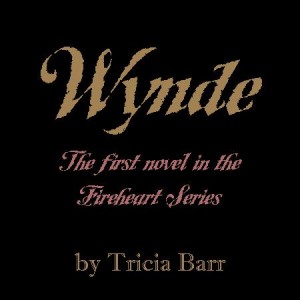I thought I’d take a minute to update everyone on the status of my novel Wynde. Despite George Lucas’ best efforts to distract me – retiring and selling Star Wars in the middle of my sprint? – I’ve kept up a consistent writing pace.
 While screenwriting isn’t the same as novel writing, many of the storytelling tools are comparable, and I’ve found that screenwriters often define those elements more clearly than novelists. Or maybe it’s the ability to tie their explanations to a movie, which takes two hours to watch, as opposed to a novel, which might take eight or nine hours to read, that makes it simpler to see their points. So if you’re an aspiring prose storyteller – whether for a fanfiction or novel – make sure you check out screenwriting blogs as a learning tool.
While screenwriting isn’t the same as novel writing, many of the storytelling tools are comparable, and I’ve found that screenwriters often define those elements more clearly than novelists. Or maybe it’s the ability to tie their explanations to a movie, which takes two hours to watch, as opposed to a novel, which might take eight or nine hours to read, that makes it simpler to see their points. So if you’re an aspiring prose storyteller – whether for a fanfiction or novel – make sure you check out screenwriting blogs as a learning tool.
Even with a solid outline and a firm idea of the story, I’m constantly questioning if what I’m writing serves the story. Luckily, Scott Myers at Go Into the Story posted a piece on storytelling structure that really helped boost my confidence in what I had on the page and in knowing what I needed to trim. The discussion of Plotline and Themeline are particularly invaluable in considering scenes, both going forward and looking back:
Structure is comprised of both the Plotline [External World] and the Themeline [Internal World]. Think about it: Is a movie simply a series of events in the External World, action we see and dialogue we hear? If it is, it is inevitably a bad movie.
Events only impact an audience if they have meaning, and they only have meaning if there is something else going on in the underlying emotional life of the story.
Every scene must have something going on in both parts of the screenplay universe: External World and Internal World.
Therefore as a writer, you must think of screenplay structure as being comprised of Plotline and Themeline.
How best to do that? In almost every story, it is the Protagonist character [or characters] that drives this discussion. A Protagonist will almost invariably have a Want [Conscious Goal] and a Need [Unexpressed Goal].
Their Want largely exists in and shapes the Plotline.
Their Need largely exists in and shapes the Themeline.
Because these two goals represent aspects of one character and eventually combine in the story’s final act, it is easy to grasp why the Protagonist is a key figure in creating the spine of your screenplay’s structure.
As a result, every scene, every major Plotline point, and every sequence must in some way be tied to the Protagonist’s twin goals of Want and Need.
I just finished what Myers calls the Reconstruction Test, which comes right before All is Lost. Think Luke screaming “No!” as he sees Vader strike down Ben. For me, as a storyteller, that has always been the hardest. I know what needs to happen to the hero, but I always worry about whether the reader is going to connect with her in the run-up to that moment. The fact that A New Hope does it with suspense (the trash compactor), a dash of romance (a kiss for luck), and humor (Han chasing the stormtroopers) makes me all the more appreciative of what that movie accomplishes.
The hair-raising final sequences of Wynde are underway. I just finished one of the scenes from the teaser trailer. That’s a tool I also recommend, because the trailer gives you distinct visuals – epic moments – to shoot for. By the way, it’s this scene:
INT. MILITARY TRAINING ROOM
The middle of the room is dominated by a large translucent sphere of shimmering energy. Within the sphere, two individuals in military training fatigues prepare to engage one another in zero-gravity hand-to-hand combat.
It turned out way better emotionally for the characters than I could ever have imagined at the outlining stage. Many thanks to everyone who has been cheering me on, most especially the alpha readers, who often find humorous ways to point out my writing ticks and dare me to change something.
With that, I’m off to write!
